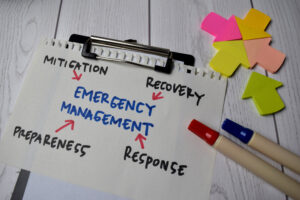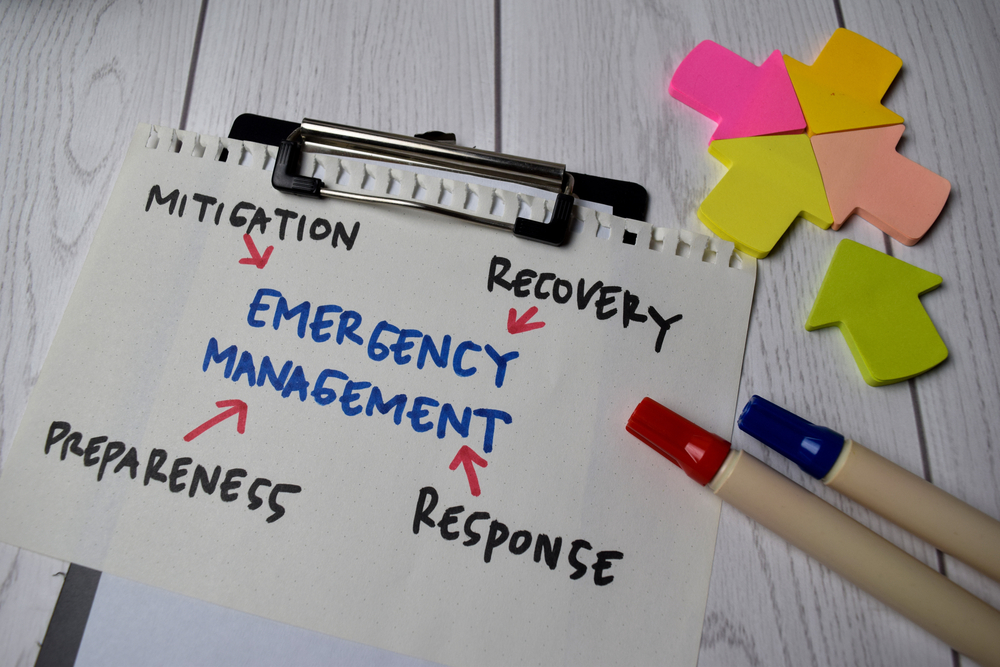For those who are housebound due to age, chronic illness, or disability, an emergency can be more than just disruptive, it can be life-threatening. Whether it’s a sudden power outage, a severe weather event, or a medical emergency, being unprepared puts vulnerable individuals at significant risk.
This guide will walk you through how to build a plan that protects health and ensures safety so that you and your loved one can feel secure at home no matter the situation.
Your loved one’s needs are unique — and so are the risks
Cookie-cutter plans don’t work for complex care needs
A one-size-fits-all emergency plan doesn’t work when your loved one has specific mobility, medical, or care needs. A personalized emergency plan should take mobility limitations, wheelchair access, medication schedules, special medical equipment or electricity-dependent devices and in-home oxygen or feeding systems into account.
Cognitive impairments can be especially challenging in an emergency, as confusion, memory loss, and difficulty processing rapid changes make it hard to follow standard evacuation procedures or safety protocols. Whether you’re caring for someone with early Parkinson’s, multiple sclerosis, or a disability requiring consistent routines, your customized emergency preparedness plan should account for their specific challenges.
Providing for pets during emergencies
Pets are family too. Make sure your emergency plan includes food, water, medications, carriers, and comfort items for any animals in your home. Familiarize yourself with nearby pet-friendly shelters or boarding facilities in case an evacuation is necessary.
How to Build a Personalized Emergency Kit
First Aid, Medical and Essential Food + Water Supplies
Your emergency kit should include at least 3–7 days of essential items, including:
- A backup supply of all medications (ask your doctor or pharmacist how to store them safely)
- Extra batteries or power banks for hearing aids, oxygen, and other medical devices
- First aid kit with antiseptics, bandages, gloves, thermometer, etc.
- Incontinence products, mobility aids, hygiene items
- Non-perishable food and at least one gallon of water per person per day
Important Documents and Cash
Keep copies of the following in an easily accessible waterproof container :
- Emergency contact list (family, caregivers, doctors)
- Insurance information
- Personal ID and medical history
- Medication list and dosage instructions
- Power of attorney and healthcare proxies
- A small amount of cash in case ATMs or cards aren’t working
Ensuring your home’s safety before crisis strikes
Preparing your surroundings for quick action

While home safety is vital at all times, it’s also the crucial first step in disaster preparedness. Clear exit routes of clutter or furniture, label emergency supplies clearly and keep working flashlights in central areas of your home. If you haven’t already, consider basic bathroom safety modifications and fall prevention strategies to keep your home easy to navigate during a crisis.
Planning for evacuation scenarios
Begin by identifying at least two evacuation routes from your home, such as your primary exit (typically the front door) and a secondary route such as a back door, side entrance, or an accessible window. If your loved one uses a wheelchair, ensure one route accommodates their mobility device while the backup route has necessary equipment like a transfer chair stored nearby.
Once you’ve mapped these routes, decide on a meeting point for family or care staff. If your loved one requires accessible transportation, pre-arrange ambulette services or assistance from a local agency. Additionally, pack a bag with essential items that can be grabbed quickly.
Emergency communication plan
In an emergency, you need a clear communication plan. Start by designating a primary contact person along with a backup, then write out key phone numbers in case your phone dies or becomes inaccessible. Store medical and emergency contacts on your phone and on paper to ensure you have multiple ways to reach critical services. Finally, share your plan with neighbors, family, and your compassionate care team at Americare NY, so everyone can coordinate effectively during a crisis.
Enrollment in local emergency programs
Understanding community resources
New York offers several programs designed to support seniors and disabled residents during emergencies. These include NYC Emergency Management’s Ready NY, and local utility services that offer life-support equipment alerts.
Registering with emergency assistance services
You can often pre-register with your local fire department or emergency response team if someone in your home has mobility or medical needs. Contact NY Connects, your local Area Agency on Aging, or contact our team at Americare NY for help enrolling.
Training caregivers and family members
Practice makes your plan perfect
Schedule drills at least twice a year to review your emergency kit and make sure all equipment is working. Walk through your home evacuation routes and time your response to identify any gaps or improvements needed.
Keeping everyone on the same page
Clear communication is the difference between confusion and coordinated care during an emergency. Make sure everyone involved in your loved one’s care knows exactly where emergency supplies are stored and can access them quickly. Additionally, ensure that you are not the only one who can operate medical equipment your loved one depends on, such as oxygen concentrators, feeding tubes, or mobility devices. It may be helpful to create a simple reference sheet with step-by-step instructions and emergency protocols that can be easily referenced under pressure.
Maintaining communication at all times
Utilizing reliable communication devices
Staying connected during an emergency requires multiple layers of communication backup. A battery-powered or crank radio can be your lifeline to emergency updates and official information when the power fails, while fully charged phones paired with portable chargers or power banks ensure you can maintain contact for extended periods of time.
Beyond basic communication tools, a medical alert device or emergency call button that operates independently of your home’s power system can provide an additional safety net, giving your loved one access to help when other communication methods become unavailable.
Real time updates
Stay informed of emergencies by enrolling in multiple alert systems. Ready NYC (Notify NYC) provides real-time information about weather emergencies, transportation issues, and citywide safety concerns.
Con Edison outage alerts give advance notice of planned shutoffs and immediate notifications when unexpected outages occur — essential when medical equipment requires electricity.
Finally, local community boards and care providers often share neighborhood-specific updates about road closures, service interruptions, and available resources that larger systems miss.
Post-emergency recovery plan
Assessing and documenting damages
Once the emergency has passed and it’s safe to return, conduct a thorough walk-through of your home. Document any structural damage, broken windows, water intrusion, or damaged medical equipment with photos for insurance purposes and future reference. Pay attention to medications that may have been compromised by temperature changes, flooding, or power outages and take inventory of emergency supplies that were used or depleted during the crisis.
Most importantly, assess how your loved one’s care needs may have changed during the emergency. Stress, disrupted routines, or medical incidents during the crisis might require adjustments to their ongoing care plan.
Where to turn for help
To restock supplies, refill prescriptions, and schedule follow-up care, reach out to FEMA, the Red Cross, and your healthcare provider. Our compassionate care team at Americare NY can also help coordinate any services you may need to get back on your feet.
We’ll make sure you’re ready for whatever’s next
When you have a comprehensive plan tailored to your circumstances, you can face any crisis with confidence.
At Americare, we understand that every family’s needs are unique, and we’re here to help you build an emergency plan that truly works for your situation. Our experienced care team can guide you through every step of the process, from medical support considerations to mobility accommodations and beyond. Don’t wait for an emergency to test your preparedness. Contact our team today and take the first step toward comprehensive emergency planning that protects you and your loved ones.

